
President Abraham Lincoln, in his Gettysburg Address, eloquently described fallen Union soldiers as individuals who had given their “last full measure of devotion.” However, it’s crucial to remember that casualties in war encompass not only fatalities but also the wounded, and often, the number of serious injuries far exceeds the count of deaths. For numerous veterans, these injuries become enduring companions throughout their lives. Some bear wounds from shrapnel or bullets that continue to impact them indefinitely. Others contend with traumatic brain injuries that carry lasting repercussions, and many grapple with the challenges of limb amputations. (Also read: these are the 15 highest ranking military generals and admirals in American history.)
To find the wars in which the most Americans were wounded, 24/7 Wall St. reviewed data from the Department of Veterans Affairs’ fact sheet, America’s Wars, and the Department of Defense. The conflicts are ordered by total service members who were non-mortally wounded in each of these major conflicts.
The two most costly wars for the United States were World War II and the Civil War. There were more than 1 million casualties in WWII, more than 670,000 of them wounded. Casualties for Union and Confederate forces combined in the Civil War exceeded 900,000, with about half of them wounded.
The cold, hard calculus of warfare has historically put the ratio of wounded to those killed in combat at around 3:1. However, recent medical advances have improved that proportion, putting the U.S. wounded-to-killed ratio in a range of 10:1 to 17:1. The U.S. has been on the vanguard of improving the fate of its wounded soldiers.
Harvard Kennedy School’s Belfer Center for Science and International Affairs cites four reasons for the change in the ratio: preventive care, battlefield medicine, evacuation practices, and personal protective equipment. (Still, some of the military equipment is considerably older. (Also check out: these are 20 countries with the most military firepower.)
As battlefield survivability increases, governments will have to adjust the costs of war for caring for the rising number of wounded soldiers who survive combat.
Click here to see wars in which the most Americans were wounded.

12. Desert Shield & Desert Storm
> U.S. non-mortal wounds: 467
> Total U.S. deaths: 1,948
> U.S. combat deaths: 148
> U.S. deaths outside combat: 1,800
> Total U.S. service members in conflict: 2,225,000
> Duration: 1990-1991
Desert Shield and Desert Storm were the two U.S.-led military operations whose mission was to expel Iraqi forces from Kuwait. Iraq had invaded the small nation on the Arabian Peninsula in 1990. The coalition forces featured the largest complement of U.S. service members since the Vietnam War. They completely routed the Iraqi forces. Though the casualty totals were much lower than the military had feared, there were still hundreds wounded during the conflict.
[in-text-ad]
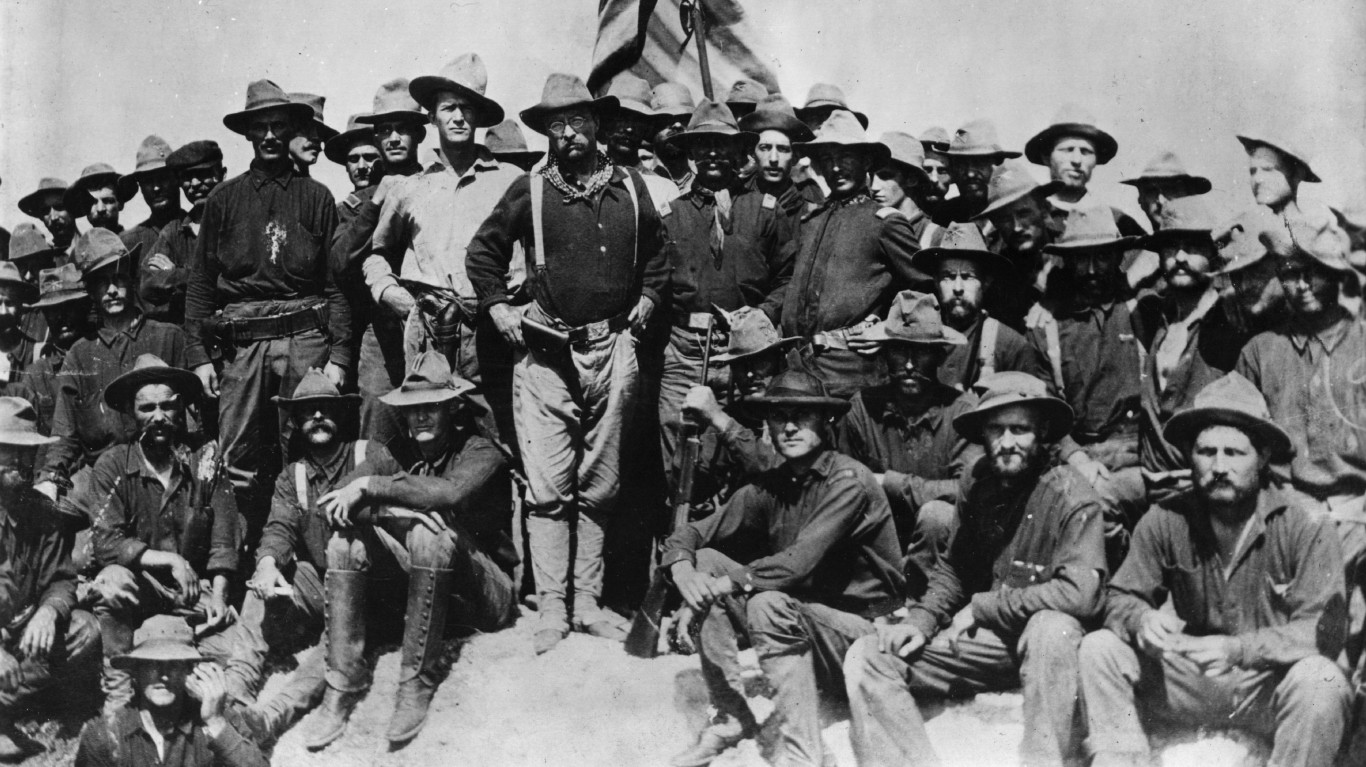
11. Spanish-American War
> U.S. non-mortal wounds: 1,662
> Total U.S. deaths: 2,446
> U.S. combat deaths: 385
> U.S. deaths outside combat: 2,061
> Total U.S. service members in conflict: 306,760
> Duration: 1898-1902
The Spanish-American War was a one-sided conflict that resulted in the end of Spain’s colonial empire in the Western Hemisphere and the launch of the United States to world power status. The war was brief and famous for Admiral George Dewey’s victory over the Spanish fleet in the Philippines and future President Theodore Roosevelt’s Rough Riders exploits in Cuba. Fewer than 400 American soldiers were killed in battle, but 1,500 died from yellow fever. By the end of the conflict, 1,662 U.S. military were wounded.
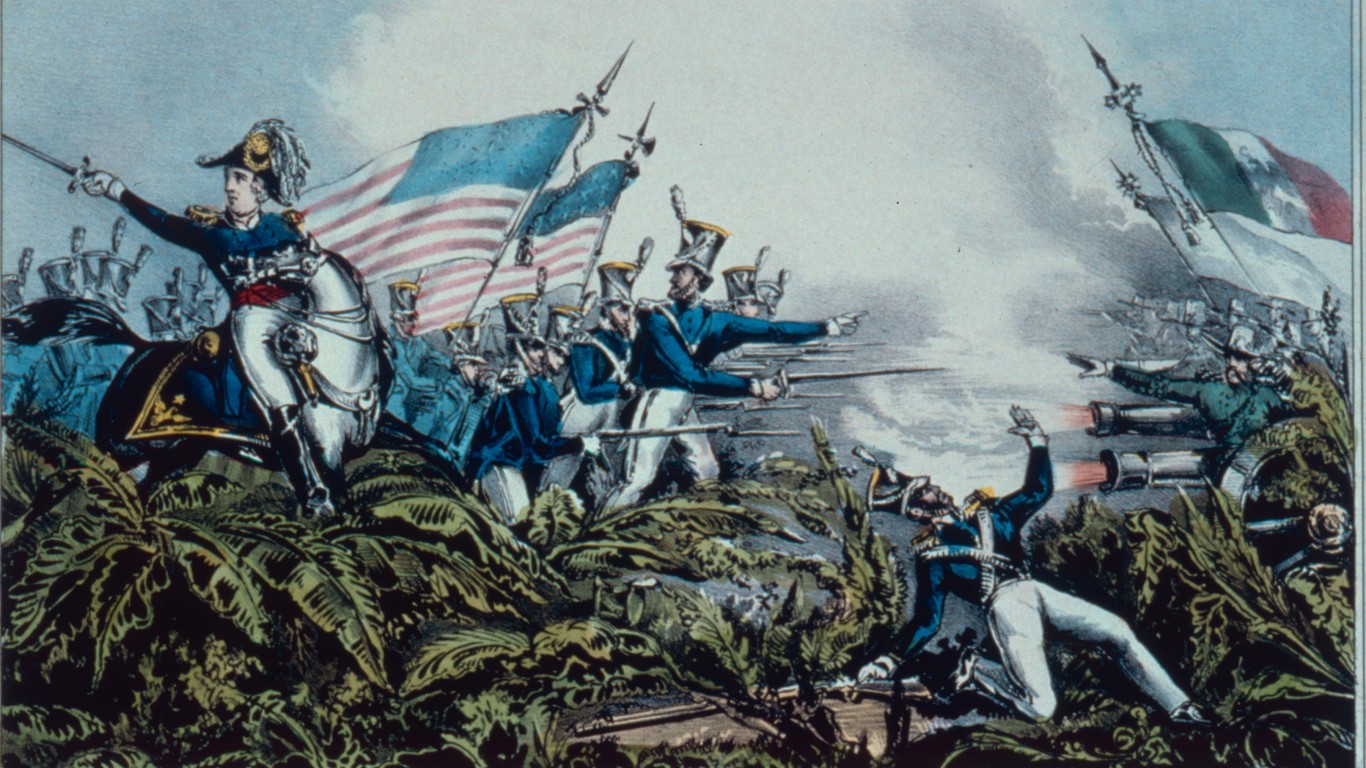
10. Mexican War
> U.S. non-mortal wounds: 4,152
> Total U.S. deaths: 13,283
> U.S. combat deaths: 1,733
> U.S. deaths outside combat: 11,550
> Total U.S. service members in conflict: 78,718
> Duration: 1846–1848
American ambitions for fulfilling Manifest Destiny in claiming all the lands between the Pacific and Atlantic oceans resulted in the annexation of Texas. This, in addition to a border dispute between the United States and Mexico resulted in war in 1846. The U.S. Army won almost all the battles – including at Veracruz, Buena Vista, and finally Mexico City – and Mexico signed the Treaty of Guadalupe Hidalgo in 1848. The U.S. gained the territories of Texas, California, Nevada, and Utah, as well as parts of New Mexico, Wyoming, Arizona, and Colorado. Over 4,000 American soldiers were wounded in the conflict.
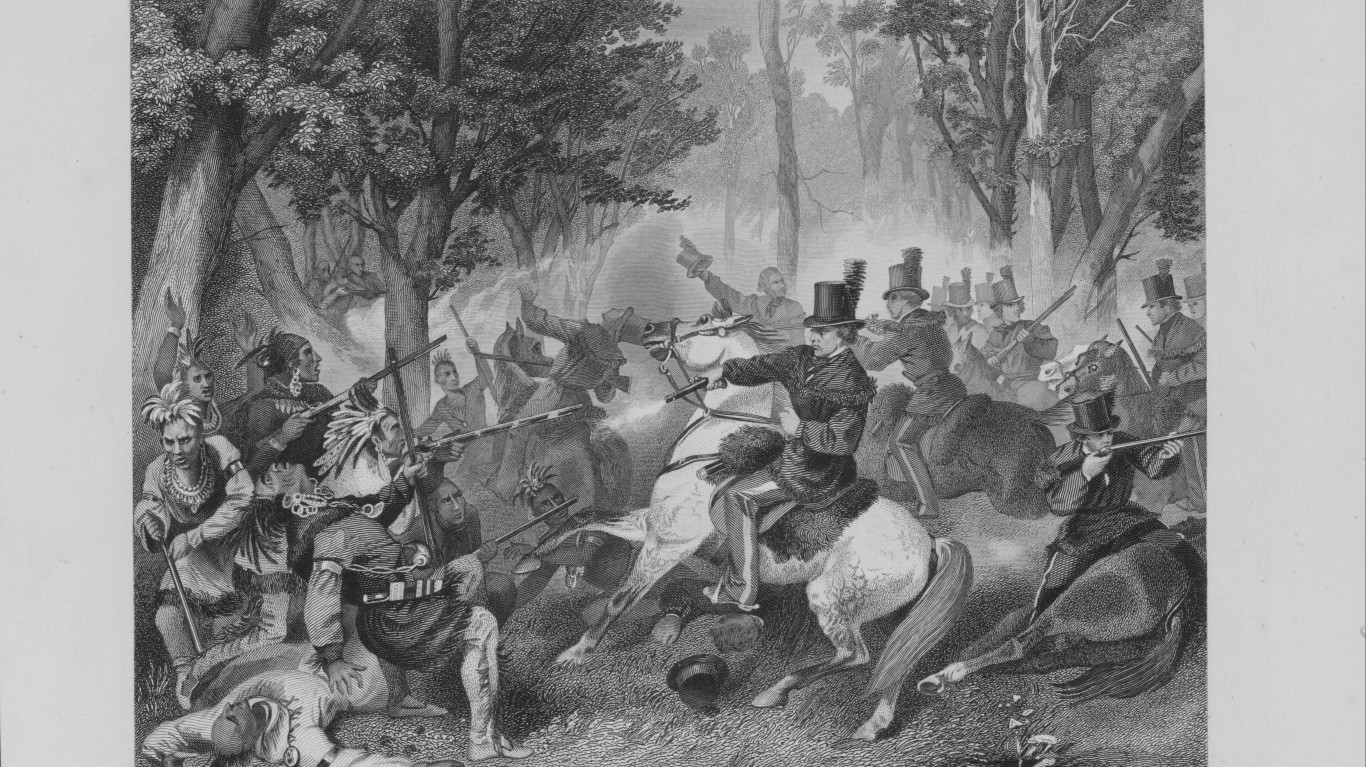
9. War of 1812
> U.S. non-mortal wounds: 4,505
> Total U.S. deaths: 15,000
> U.S. combat deaths: 2,260
> U.S. deaths outside combat: 12,740
> Total U.S. service members in conflict: 286,730
> Duration: 1812-1815
Thirty years after the American Revolution, the United States and Great Britain fought again. The issues were trading rights and the practice of impressment, in which the British forcibly removed American seamen off their ships and into the service of Great Britain. The U.S. lost most of the battles, suffering the humiliation of a failed invasion of Canada and the British burning of the newly created capital of Washington, D.C., in 1814. Under the leadership of future President Andrew Jackson, the U.S. did defeat the British at New Orleans.
While none of the U.S. goals during the war were realized, the nation remained independent, but not before suffering more than 27,000 casualties.
[in-text-ad-2]

8. American Revolution
> U.S. non-mortal wounds: 6,188
> Total U.S. deaths: 21,435
> U.S. combat deaths: 4,435
> U.S. deaths outside combat: 17,000
> Total U.S. service members in conflict: 217,000
> Duration: 1775-1783
By percentage, the War of Independence was a costly one for the new nation in terms of battle deaths and wounded. There were 4,435 battle deaths and 6,188 soldiers who suffered wounds in a nation of just 4 million people.
The Continental Army and state militias were defeated in battles in the New England and mid-Atlantic region by professional soldiers from Great Britain and German mercenaries. But military instruction from accomplished European soldiers and aid from allies Spain and France swung the advantage to the United States.
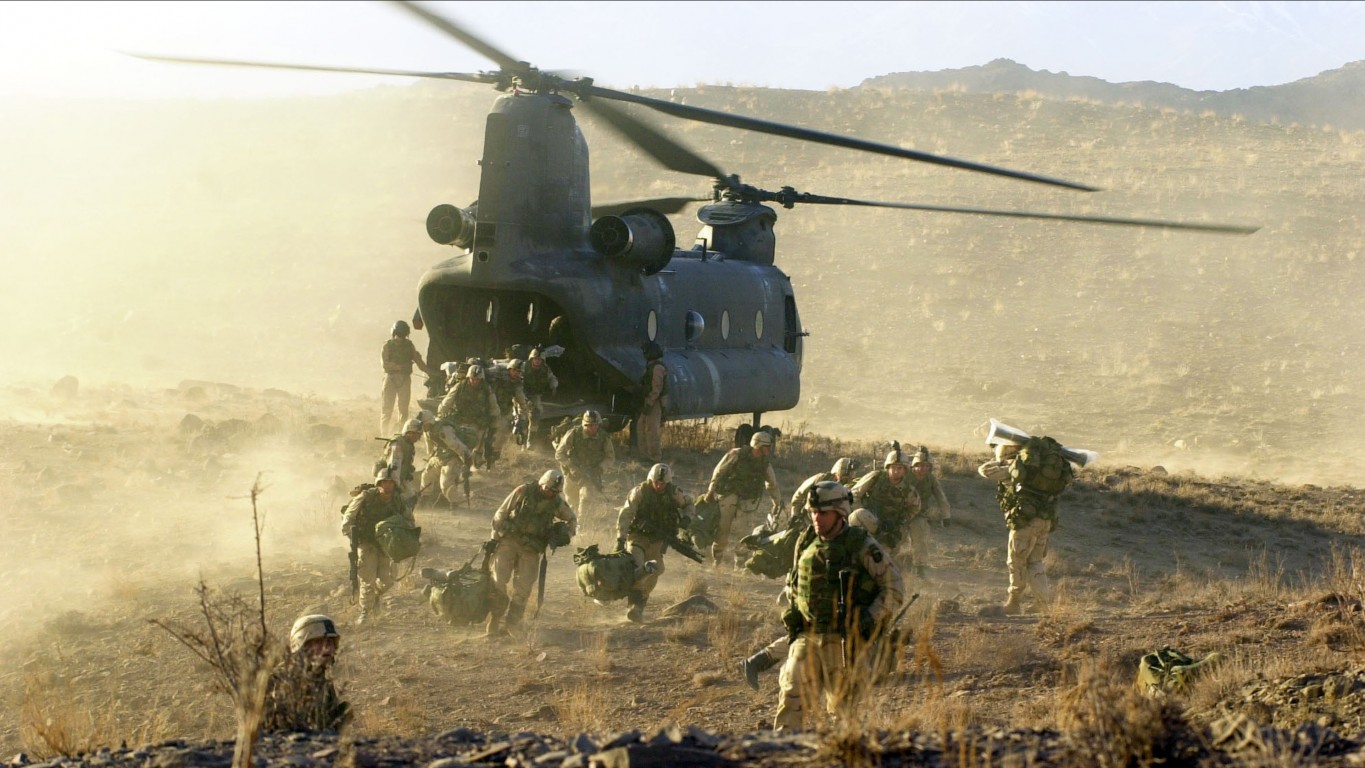
7. Afghanistan War
> U.S. non-mortal wounds: 20,093
> Total U.S. deaths: 2,218
> U.S. combat deaths: 1,833
> U.S. deaths outside combat: 385
> Total U.S. service members in conflict: N/A
> Duration: 2001-2021
The Afghanistan War was the longest in U.S. history, and as such was the seventh costliest in terms of war wounded, with more than 20,000 service members injured.
The U.S. and its coalition allies invaded the mountainous nation in November 2001, after the Taliban-led Afghan government refused to hand over Osama bin Laden, who planned attacks on the U.S. on Sept. 11 of that year. The defeated Taliban relocated to southern Afghanistan and also gained sanctuary over the border in Pakistan, from where it led a bloody insurgency against the Western-backed government.
The U.S.-led coalition formally ended its combat mission in 2014 and withdrew all forces in 2021. The Taliban insurgency eventually defeated the Afghan military.
[in-text-ad]

6. Iraq War
> U.S. non-mortal wounds: 31,994
> Total U.S. deaths: 5,482
> U.S. combat deaths: 4,505
> U.S. deaths outside combat: 977
> Total U.S. service members in conflict: N/A
> Duration: 2003-2011
There were two parts to the Iraq War, which lasted from 2003 to 2011. In the first phase, a U.S.-led coalition invaded Iraq in March 2003, after Saddam Hussein said he did not have weapons of mass destruction. The forces quickly ousted the Iraqi government, and the first phase ended in April with 150 allied deaths by May 1.
A prolonged insurgency began quickly, and coalition casualties soon climbed. This prompted a surge of 20,000 troops in 2007 that led to a drop in hostilities. The U.S. drew down its forces and formally withdrew from Iraq in December 2011.
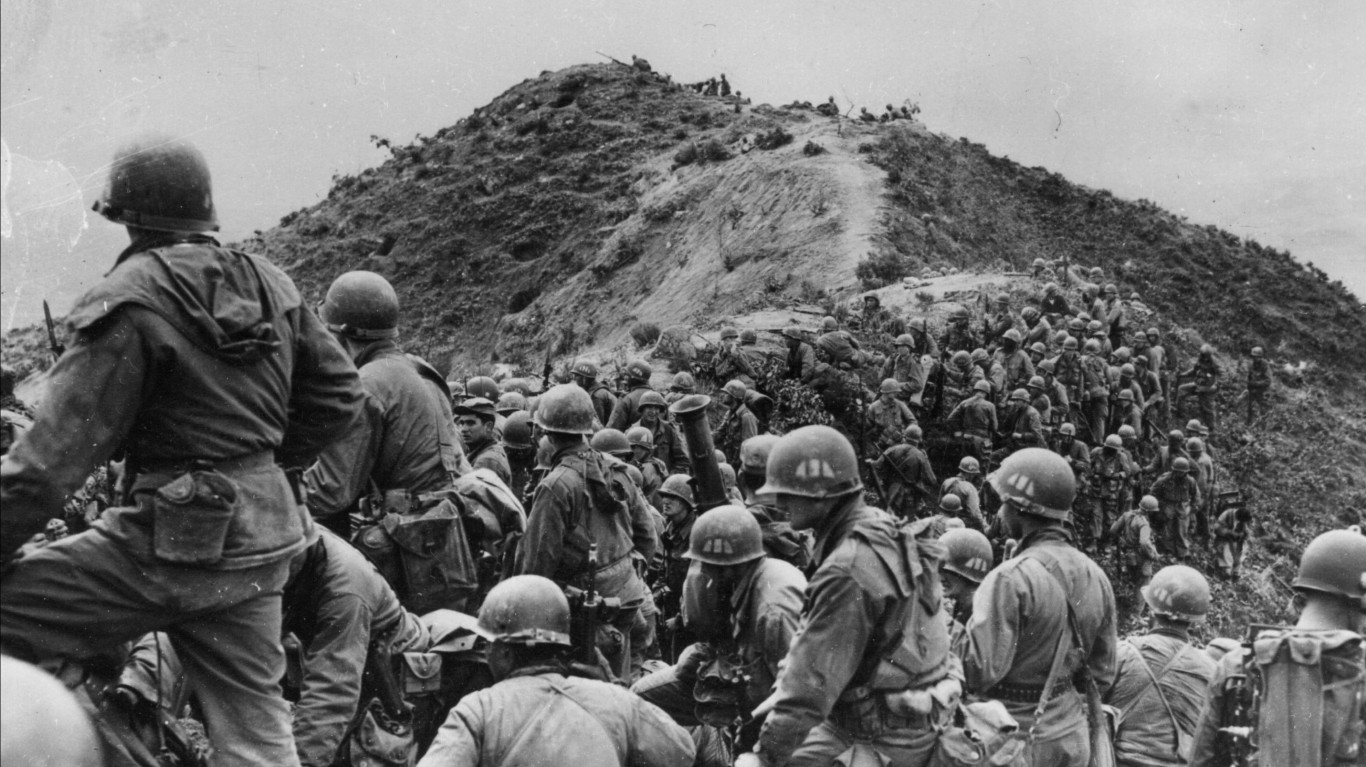
5. Korean War
> U.S. non-mortal wounds: 103,284
> Total U.S. deaths: 54,246
> U.S. combat deaths: 33,739
> U.S. deaths outside combat: 20,507
> Total U.S. service members in conflict: 5,720,000
> Duration: 1950-1953
The Korean War has been called the “Forgotten War,” but it was hardly forgotten by the more than 100,000 soldiers wounded during the three-year conflict.
The war began after North Korea, supported by the communist-led nations of China and the Soviet Union, invaded South Korea, backed by the United Nations, the United States, and its allies. It was the first shooting war during the broader Cold War. Under Gen. Douglas MacArthur, the U.S.-led U.N. troops drove the communist forces to the Yalu River that was the border between North Korea and China. At that point, China entered the conflict and pushed the U.N. troops back, with many casualties on both sides. U.N. troops fought their way back up the peninsula, and the war settled into a stalemate, where it remains today.

4. Vietnam War
> U.S. non-mortal wounds: 153,303
> Total U.S. deaths: 90,220
> U.S. combat deaths: 47,434
> U.S. deaths outside combat: 42,786
> Total U.S. service members in conflict: 8,744,000
> Duration: 1964-1975
The Vietnam War, America’s second-longest war, would become the most divisive conflict in the nation’s history.
America became involved in the war in Southeast Asia after the Vietnamese ousted their French colonial overlords following World War II. Vietnam was divided into a north region backed by the Soviet Union and its allies, and the south region supported by the U.S. Communist incursions into the south led to an American force buildup beginning in 1964. It was mostly an asymmetrical war, with few actual pitched battles fought, and was conducted mostly as a guerrilla war. It was a stalemate, and the U.S. eventually withdrew by 1973. North Vietnam prevailed two years later. More than 153,000 U.S. troops were wounded in the war, and more than 47,000 died in battle.
[in-text-ad-2]
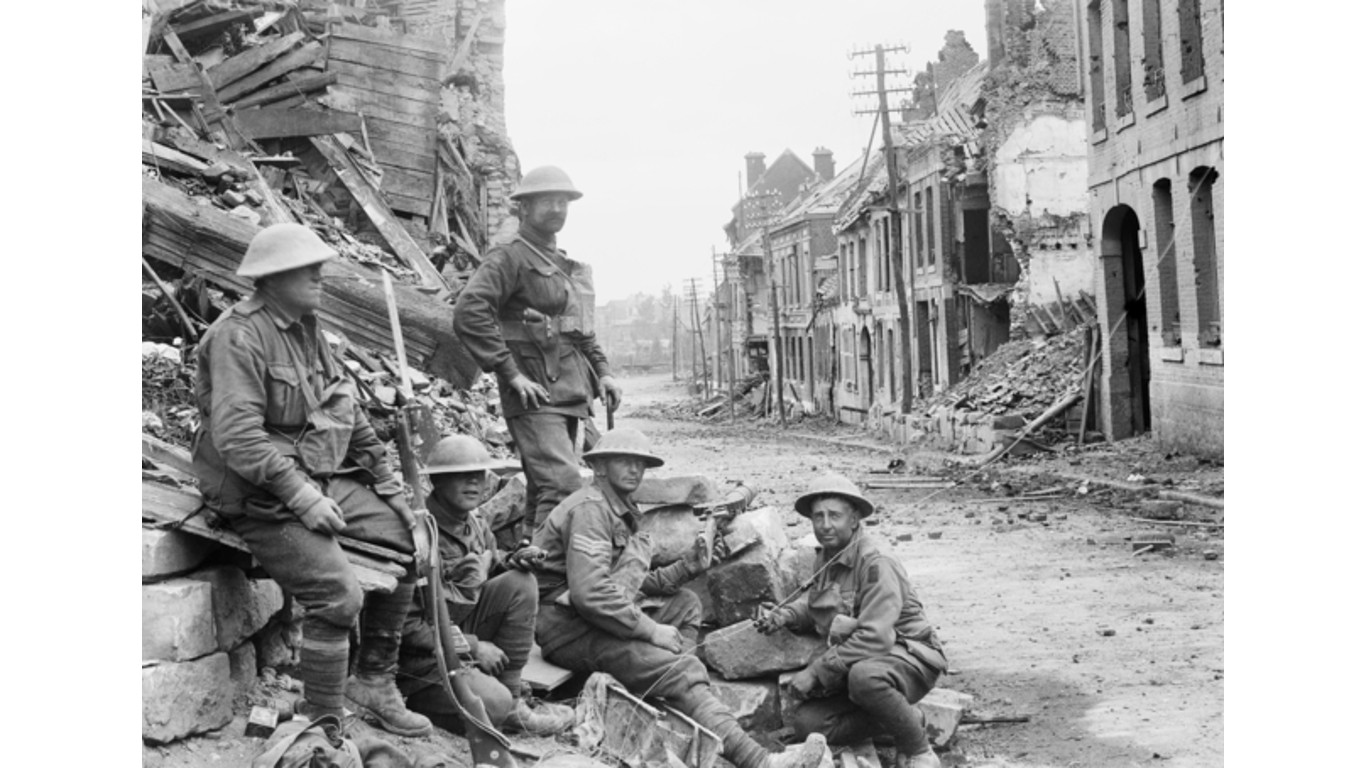
3. World War I
> U.S. non-mortal wounds: 204,002
> Total U.S. deaths: 116,516
> U.S. combat deaths: 53,402
> U.S. deaths outside combat: 63,114
> Total U.S. service members in conflict: 4,734,991
> Duration: 1917-1918
America tried to stay out of World War I and did not enter the conflict until 1917. German unrestricted submarine warfare that sank American shipping bound for Great Britain and France and a secret German offer to Mexico to join the war compelled the U.S. to fight. The U.S. was not in the war for very long, but it paid the price to “make the world safe for democracy” with the lives of more than 53,000 soldiers killed in battle. Another 204,000 suffered wounds from battles at Château-Thierry, Belleau Wood, the Meuse-Argonne Offensive and others.
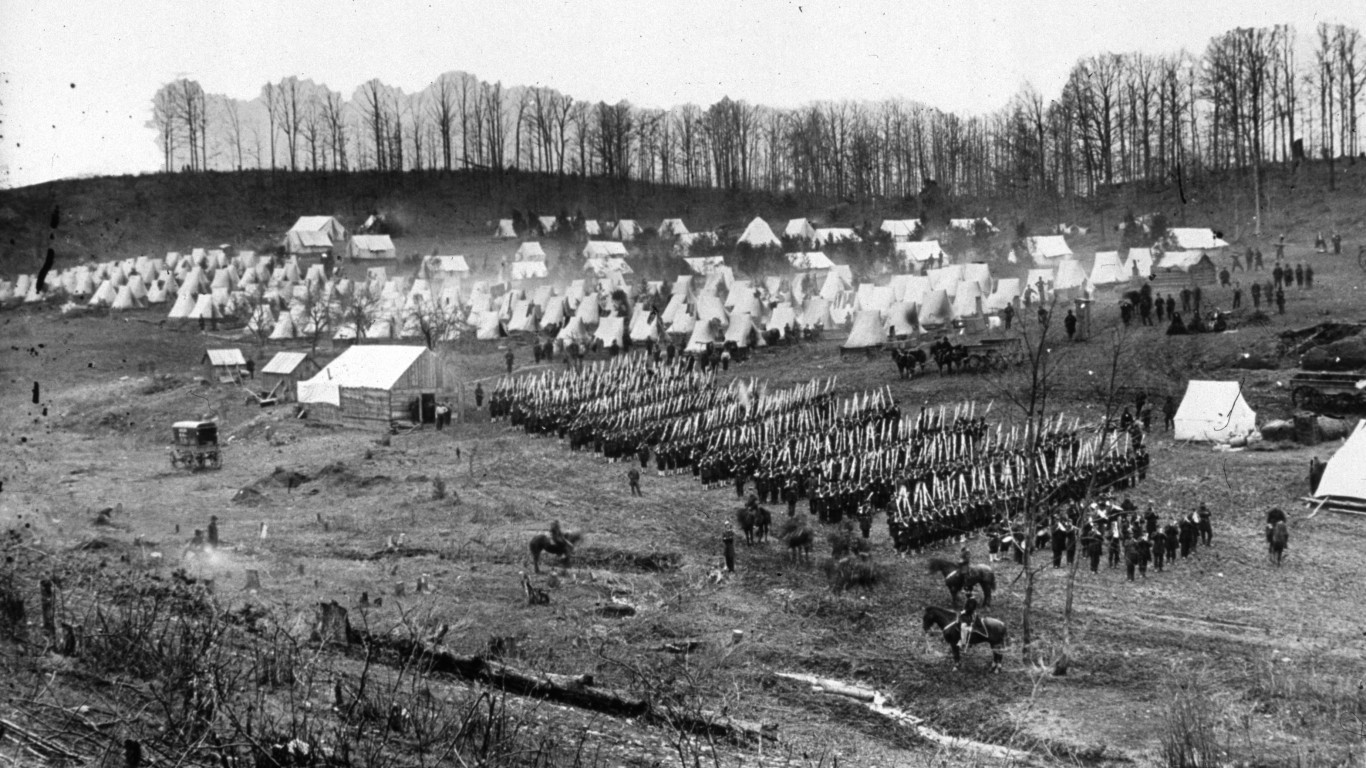
2. Civil War
> U.S. non-mortal wounds: 476,000 est. (Union 281,881, Confederacy 194,119)
> Total U.S. deaths: 498,332
> U.S. combat deaths: 214,938
> U.S. deaths outside combat: 283,394
> Total U.S. service members in conflict: 2,213,363
> Duration: 1861-1865
In terms of percentage of the population, the Civil War was the nation’s costliest, and it was a grisly prelude to the more catastrophic wars of the 20th century. It was the first time railroads were used to quickly deploy troops to battle zones. The modern economies used newly-developed methods of industrial production to make guns, bullets, and cannon on a massive scale. The names Antietam, Fredericksburg, Chancellorsville, and Gettysburg are etched in American history as the bloodiest engagements on American soil. Almost 500,000 Confederate and Union soldiers were wounded, though the war did advance medical improvements for battlefield wounds.
[in-text-ad]
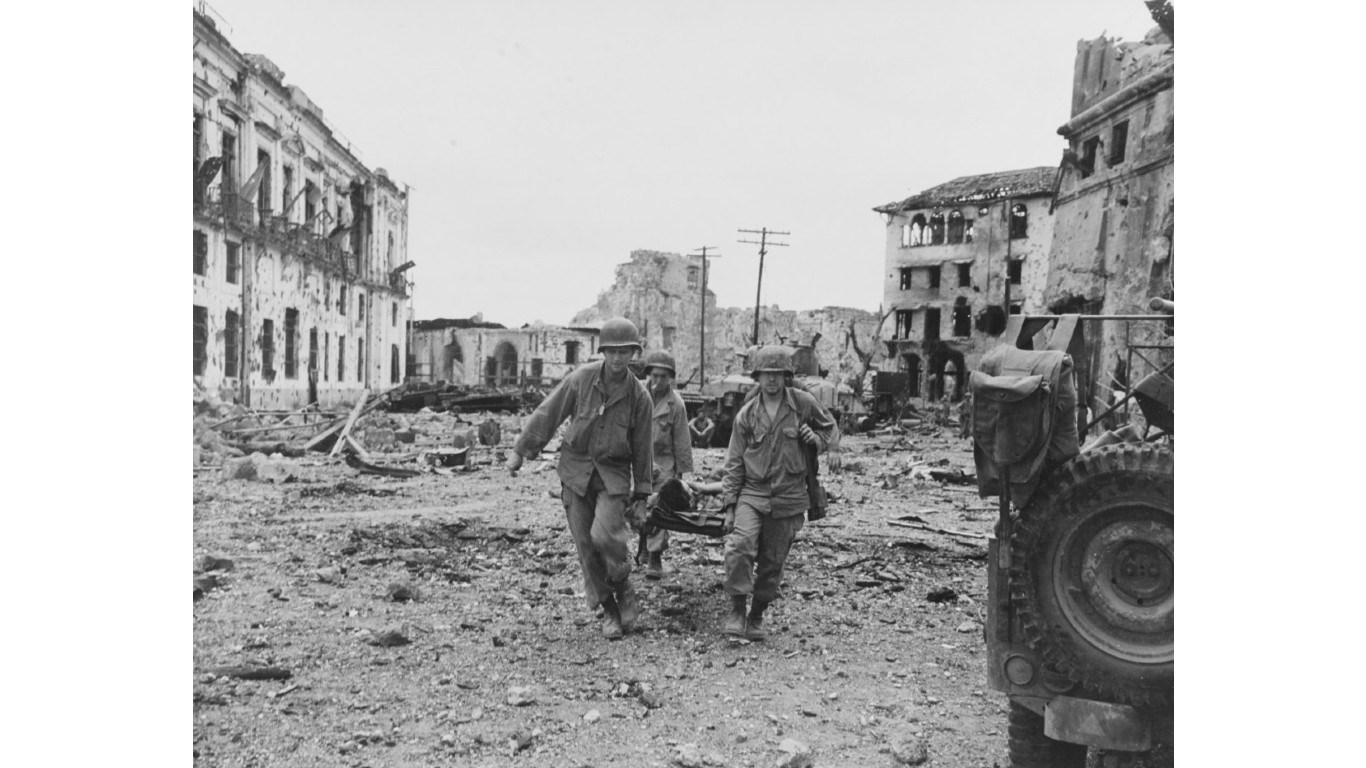
1. World War II
> U.S. non-mortal wounds: 670,846
> Total U.S. deaths: 405,399
> U.S. combat deaths: 291,557
> U.S. deaths outside combat: 113,842
> Total U.S. service members in conflict: 16,112,566
> Duration: 1941-1945
By raw numbers, World War II was the bloodiest war the U.S. has ever fought. America was not involved in a shooting war in the Pacific when Japan sought to expand its empire into China in the 1930s, and the U.S. stayed out of the European theater as Germany overran Poland and western Europe in 1939 and 1940. But Japanese expansionism put that empire on a collision course with the U.S., and the sinking of U.S. transport ships headed to Great Britain by German U boats made war with Nazi Germany inevitable. More than 670,000 Americans were wounded during the war, by far the most of any conflict the U.S. has been involved in.
Thank you for reading! Have some feedback for us?
Contact the 24/7 Wall St. editorial team.
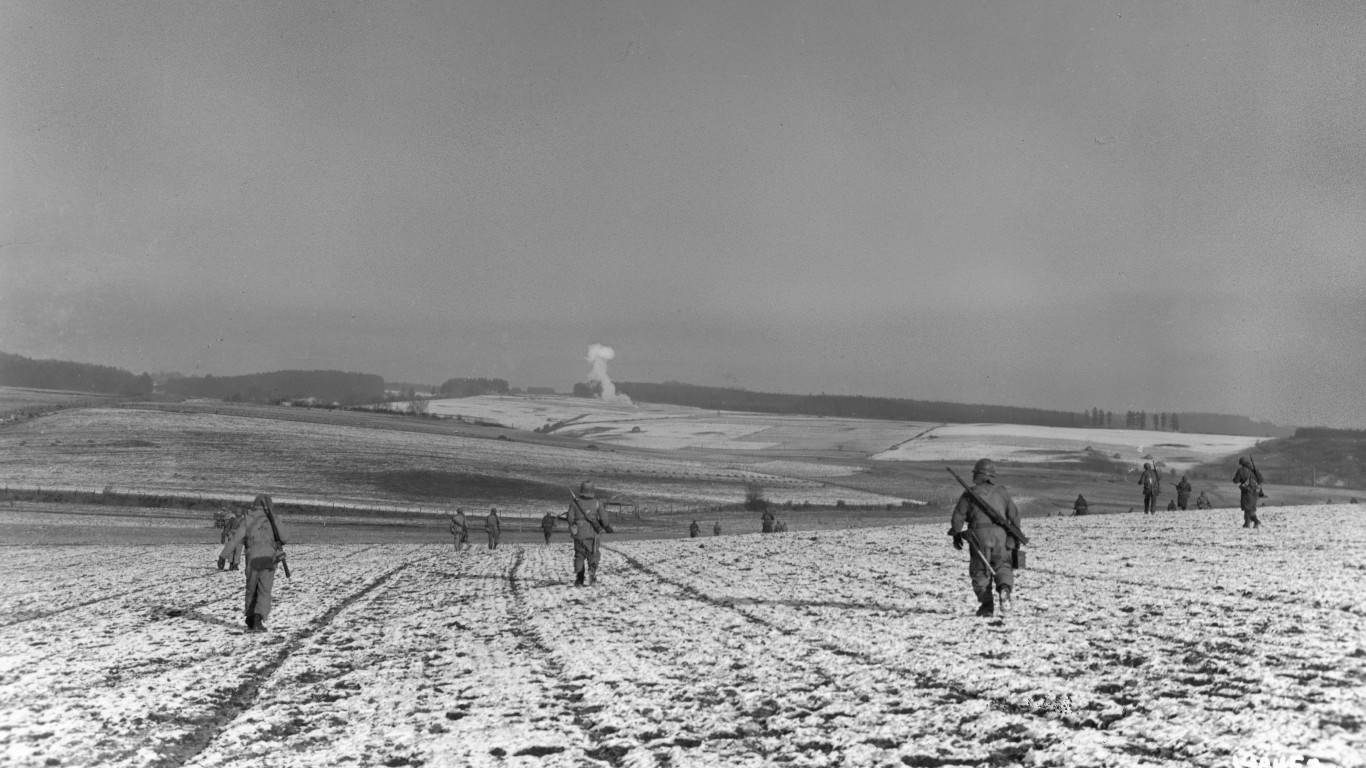 24/7 Wall St.
24/7 Wall St.
